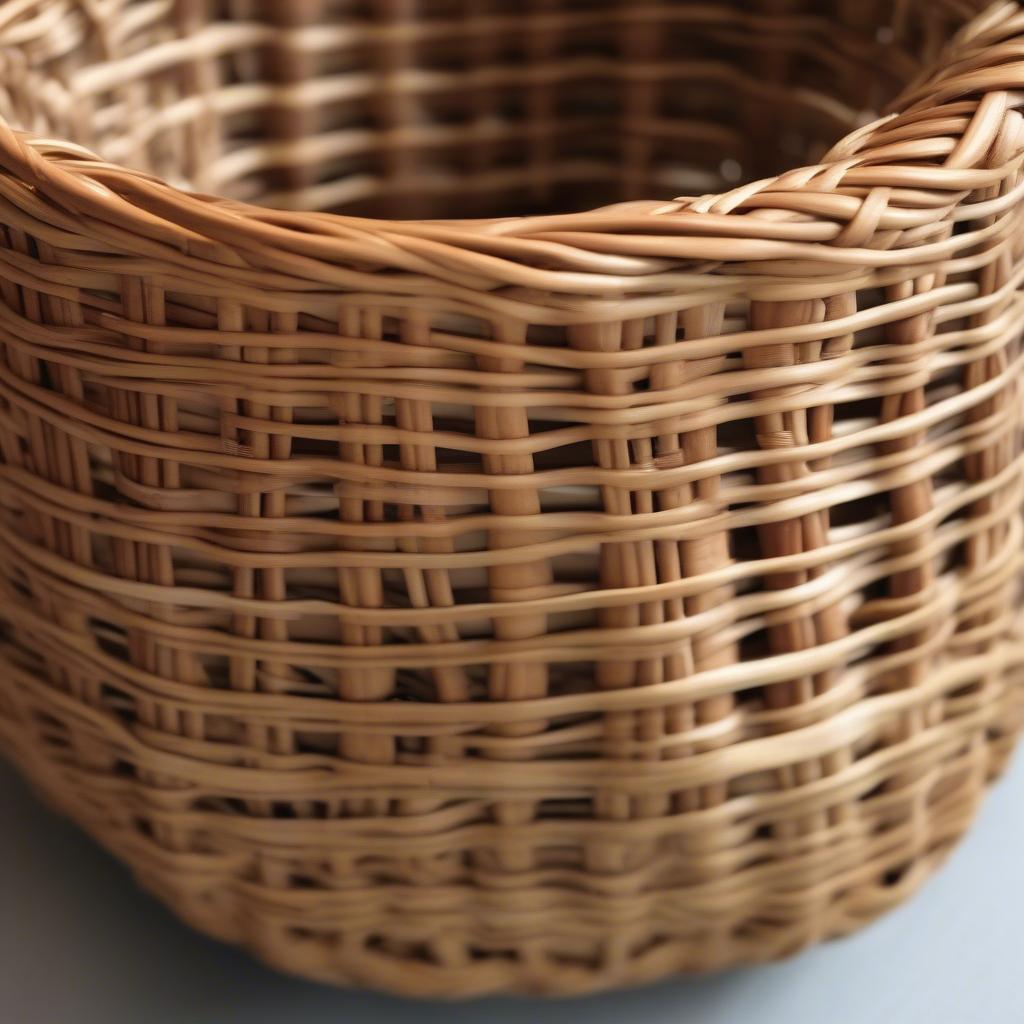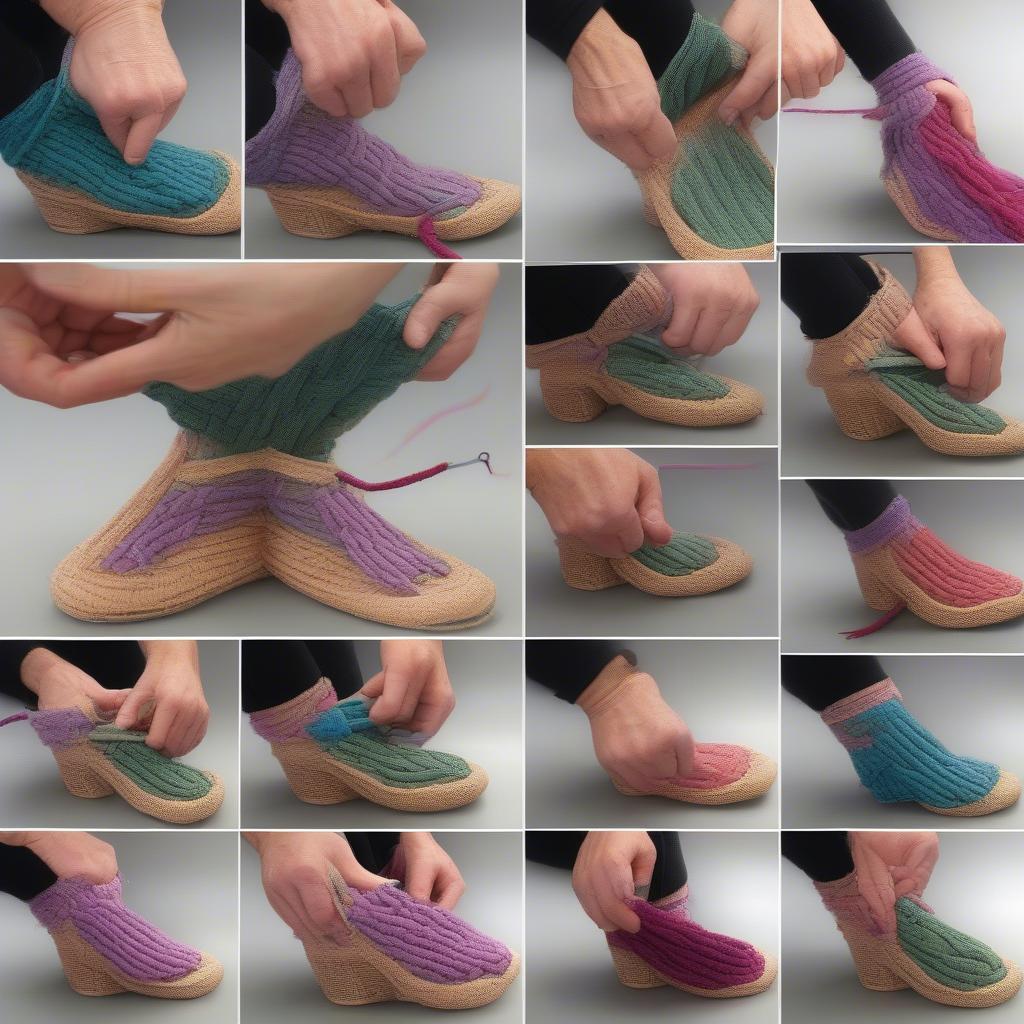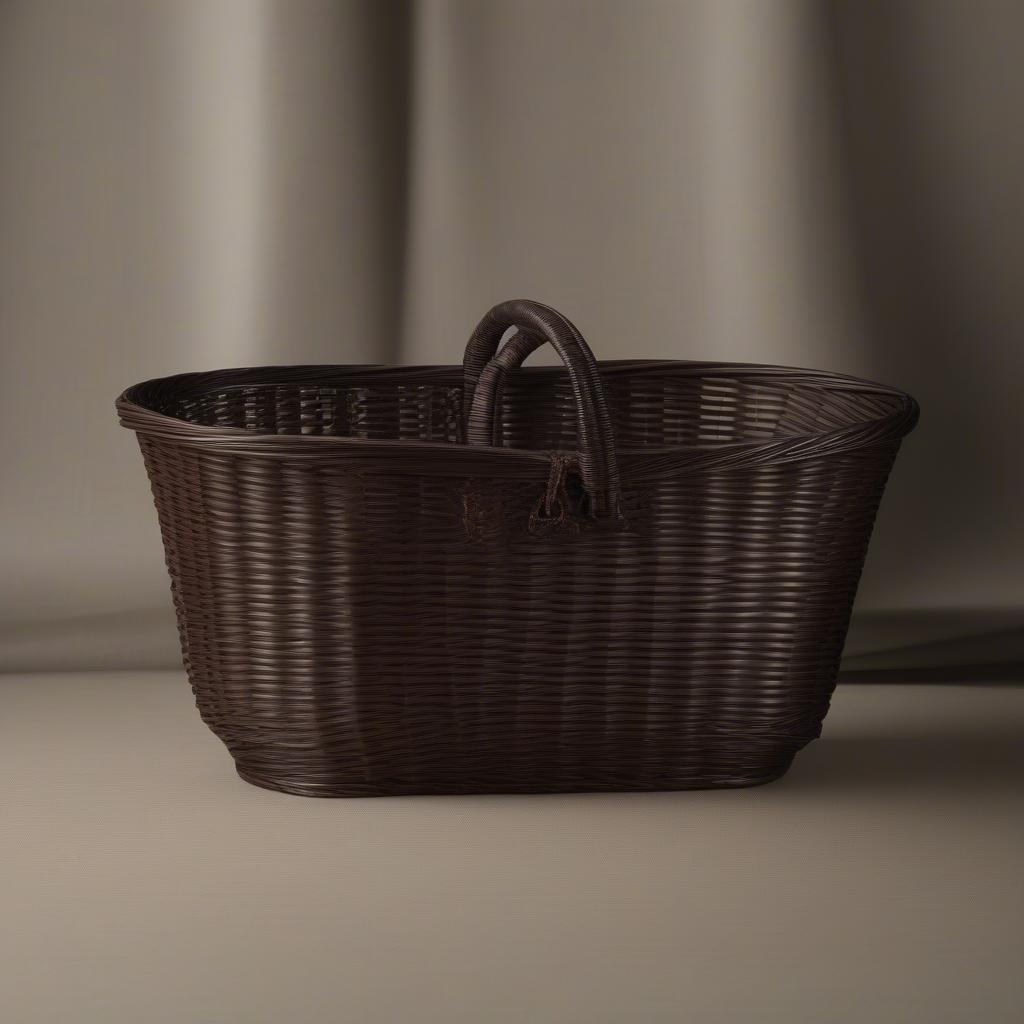Basket Weaving
Mastering the Closed Basket Weave Heel Lock
The Closed Basket Weave Heel Lock is a crucial technique for creating strong and visually appealing basketry. This article delves into the intricacies of this essential weave, exploring its benefits, applications, and providing a step-by-step guide to help you master it.
Understanding the Closed Basket Weave Heel Lock
The closed basket weave heel lock, sometimes referred to as the “wrapped and tucked” heel, provides a robust finish to your basketry projects. It secures the weavers in place, preventing unraveling and ensuring longevity. Unlike the open heel lock, this technique completely conceals the weaver ends, offering a cleaner, more polished appearance. This makes it ideal for finer basketry and projects where aesthetics are paramount.  Example of a Closed Basket Weave Heel Lock
Example of a Closed Basket Weave Heel Lock
Advantages of the Closed Heel Lock
The closed basket weave heel lock offers several distinct advantages:
- Durability: By securely locking the weavers, it significantly enhances the structural integrity of the basket.
- Aesthetic Appeal: The concealed weaver ends create a smooth, professional finish, elevating the overall look of the piece.
- Versatility: Applicable to a wide range of basketry projects, from small, delicate baskets to larger, more functional pieces.
Step-by-Step Guide to the Closed Basket Weave Heel Lock
Here’s a detailed guide to help you achieve a perfect closed basket weave heel lock:
- Preparation: Ensure your weavers are soaked and pliable. This allows for easier manipulation and a tighter weave.
- Positioning: Identify the weaver you wish to lock. Hold it firmly against the last stake it has passed.
- Wrapping: Take the next active weaver and wrap it tightly around the base of the weaver you’re locking and the stake it’s against. This creates a secure anchor.
- Tucking: Tuck the end of the locked weaver into the space created by the wrap, ensuring it’s completely concealed beneath the next row of weaving.
 Steps to Create a Closed Basket Weave Heel Lock
Steps to Create a Closed Basket Weave Heel Lock
Tips for a Perfect Closed Heel Lock
- Practice Makes Perfect: The closed heel lock requires practice to master. Start with simpler projects to hone your skills.
- Tension Control: Maintaining consistent tension is key to achieving a neat and secure lock.
- Weaver Selection: Choose weavers of appropriate size and thickness for your project. Thicker weavers may require more force to tuck securely.
“The closed basket weave heel lock is like a hidden signature, showcasing the weaver’s attention to detail and commitment to quality,” says renowned basket weaver, Amelia Reed. “It’s a testament to the art of transforming simple materials into enduring works of art.”
Common Mistakes to Avoid
- Loose Wraps: A loose wrap can compromise the security of the lock, leading to unraveling.
- Incomplete Tucking: Ensure the weaver end is completely concealed to prevent it from catching or becoming visible.
- Inconsistent Tension: Inconsistent tension can result in an uneven and unsightly finish.
 Finished Basket with Closed Basket Weave Heel Lock
Finished Basket with Closed Basket Weave Heel Lock
Conclusion
The closed basket weave heel lock is an invaluable technique for any aspiring basket maker. Mastering this technique will not only enhance the durability and beauty of your creations but also demonstrate your skill and attention to detail. By following the steps outlined above and practicing diligently, you can elevate your basketry to a new level of craftsmanship. Remember, a well-executed closed basket weave heel lock is a hallmark of quality and artistry.
FAQ
-
What is the difference between a closed and open heel lock? A closed heel lock completely conceals the weaver ends, while an open heel lock leaves them exposed.
-
What type of basketry is the closed heel lock best suited for? The closed heel lock is ideal for finer basketry where aesthetics are important.
-
What are the benefits of using a closed heel lock? It provides increased durability, a cleaner finish, and a more professional look.
-
What is the most common mistake when creating a closed heel lock? Loose wraps or incomplete tucking can compromise the security and appearance of the lock.
-
How can I improve my closed basket weave heel lock technique? Practice and consistent tension are key to mastering this technique.
Other Resources on Basket Weave
- Exploring Different Basket Weaving Techniques
- Choosing the Right Materials for Your Basketry Projects
- Caring for Your Handwoven Baskets
Need help with your basket weaving journey? Contact our 24/7 customer support team at Hotline: +84 388 951 999, or visit our offices in Hanoi, Vietnam, or Tech Avenue, Suite 12, San Francisco, CA 94105, USA.
